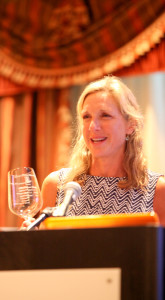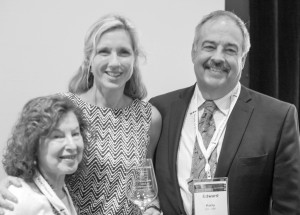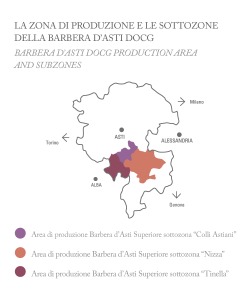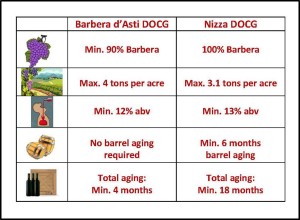As part of the Society of Wine Educator’s 39th Annual Conference held in New Orleans, the Society’s Annual Grand Award was presented to Cristina Mariani-May of Banfi Vintners. Ms. Mariani-May is the youngest daughter of John F. Mariani, Junior. Together with her cousin James Mariani, she currently serves as the co-CEO of Banfi Vinters, and represents the third generation of family leadership in the company founded by their grandfather, John Mariani, Sr.
Granted annually to a deserving wine industry leader for lifetime achievement, the prestigious “Grand Award” has in the past been presented to such wine luminaries as Robert Mondavi, Sandro Boscaini, Jancis Robinson, Warren Winiarski, Carol Meredith, and Mike Grgich, among others.
“The Society of Wine Educators is proud to present Cristina Mariani May, as the co-CEO of Banfi Vintners and its public representative, with the SWE Grand Award for 2015,” said Edward Korry, CHE, CSS, CWE, President, Board of Directors, Society of Wine Educators. “Banfi Vintners has been and is a model for wine education worldwide in terms of its commitment, outreach, and generosity.”
Banfi Vintners was founded in 1919 by John F. Mariani, Sr., who named the company after his Aunt Teodolina Banfi. Mariani’s sons John, Jr. and Harry expanded the company’s Italian import portfolio to Germany, Switzerland, and France starting in the mid-1950s, before introducing the immensely popular Riunite Lambrusco, which has topped the imported red wine category over the past four decades.
In 1978, the Mariani family founded Castello Banfi in Montalcino, Tuscany, Italy’s most honored estate and the inspiration for a renaissance in Tuscan winemaking, and in 1988, began working with the family leadership of Concha y Toro, catapulting that brand to its own leadership position and introducing Americans to Chilean wine.
Castello Banfi is internationally acclaimed for its clonal research to improve upon the region’s historical Brunello di Montalcino, and making premier quality wines that are low in sulfites and histamines. It was the first winery in the world to be awarded international recognition for exceptional environmental, ethical, and social responsibility (ISO 14001 and SA8000) as well as an international leader in customer satisfaction (ISO 9001:2000).
Encouraged by their success in business, the Mariani family established the Banfi Foundation and from its earnings contributes to leading national charities and higher education through scholarships, fellowships and grants-in-aid. To promote greater knowledge of the fine wines of Europe and the US, the Foundation has endowed the Banfi Chair of Wine Education at Cornell University and provided funding for a Chair of Economics at Colgate University themed to the American economy and the importance of the free enterprise system. In addition, each year the Foundation provides scholarships for students at select hospitality and business colleges to travel to Italy for seminars on that nation’s wine and food culture.



